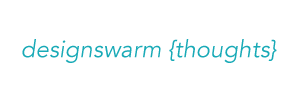I recently had the pleasure of meeting some of the great people behind a book on services in the tourism industry. Andres explained to me that they had written this book in Estonia (only has been translated to Finnish so far) and was working on setting up a BA in service design.
This was great news, as I often feel that how you teach people can influence the way an industry shapes itself. I quickly realised though that we were talking about services in really different ways. He was talking about the classic and slightly corporate view of the “service industries” like tourism, catering, etc and imagined the alumni of this program to work in middle managment in bridging ideas between people on an execution level and the upper management. Quite a different perspective than my own on the subject.
This makes me think that service design, in the way that I was taught and people talk about in the UK, can be interpreted in a really different way and a little like interaction design, might create a gap between the way a field is taught and the practice. Definitions are always useful and I get the feeling that in these pioneering years of service design, we’re gonna need one really quickly.

I think that “service design” is interaction design applied to the real world.
IMHO the best example of service design is the Nike+ project with Apple:
three products (Nike+ shoes, the shoe sensor and iPod Nano) and a website (http://nikeplus.nike.com/) are linked together in order to deliver the user a perfomance (a service).
A lot of people would argue though that service design applies to non-physical goods like healthcare, politics or retail service, ie interaction through people AND objects. Something not offered by your example. Different sides of the same coin of course.